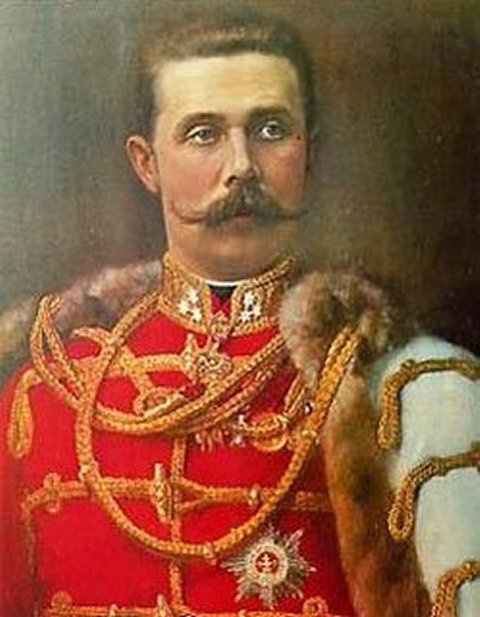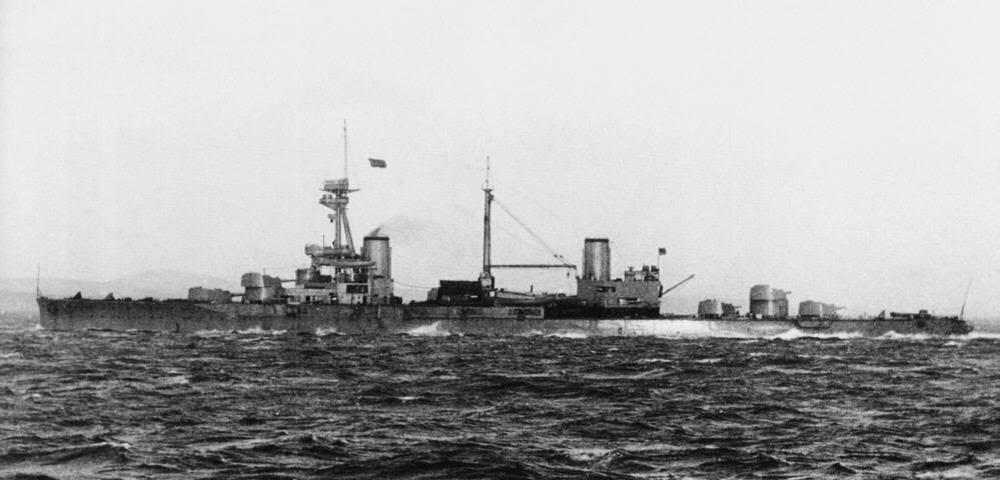U.S. Navy Plan Gray
Free Bird!
by Mike Bennighof, Ph.D.
April 2016
Note: Our Second War of the Rebellion setting began with Confederate States Navy: Plan Blue. You can read about that supplement’s story arc here.
That Confederate President Woodrow Wilson sought a declaration of war against the United States caught few by surprise; only its timing mere hours after Britain went to war with the Yankees gave pause to a few observers. But Wilson had a number of enemies, both foreign and domestic, whom he hoped to quash by engaging his nation in a war with its far more powerful rival.
 To the south, the Mexican Empire of Francesco Fernando still harbored deep resentment over the loss of Sierra Madre – the former Mexican states of Tamaulipas, Nuevo Leon and Coahuila - to the Confederacy in August 1861. Maximiliano’s nephew, the “Red Emperor” (seen at right) had enacted political, land and labor reforms that stood in sharp contrast to the labor contract system that kept the descendants of slaves in nearly the same condition in the Confederacy. Slowly, word spread that share-cropping no longer existed south of the border, and workers of whatever race could leave their employer at any time they wished. To the south, the Mexican Empire of Francesco Fernando still harbored deep resentment over the loss of Sierra Madre – the former Mexican states of Tamaulipas, Nuevo Leon and Coahuila - to the Confederacy in August 1861. Maximiliano’s nephew, the “Red Emperor” (seen at right) had enacted political, land and labor reforms that stood in sharp contrast to the labor contract system that kept the descendants of slaves in nearly the same condition in the Confederacy. Slowly, word spread that share-cropping no longer existed south of the border, and workers of whatever race could leave their employer at any time they wished.
Mexico remained a poor country, with armed forces far less capable than those of the Confederacy. But the radical notions of Francesco Fernando – who reportedly toyed with the idea of extending the franchise to all people of his Empire, men and women, based only on a simple literacy test – frightened the Confederacy’s ruling class more than the combined dreadnought fleets of the Union and its Teutonic allies.
Wilson also faced internal enemies opposed to the South’s rigid racial hierarchy; while slavery had been formally ended, the one-sided labor contracts forced on black Southerners and utter lack of civil rights made some observers question whether this oppressed underclass was not actually worse off. A movement of young people and disaffected industrial workers had grown up around the writings of Ronald Van Zant, the South’s “Barefoot Poet Laureate.” The Wilson government had initially embraced Van Zant, mistaking his ironic criticism of Southern class structure in such lines as “forget your lust for the rich man’s gold/all that you need is in your soul” for support of the status quo. While the young questioned, the small but growing white working class seethed with rage. The owners of factories, mills and mines undercut their efforts to gain a living wage by employing black workers on unbreakable contracts at sub-poverty rates of pay. The working class could not compete with slave wages.
Wilson and the leaders of his Secessionist Democrat Party saw the Free Birds, as Van Zant’s followers called themselves, as a far greater danger to the Southern political order than the impotent Whigs of the opposition party. A war, they believed, would thrust these angry young men into uniform and instill in them the martial values of their grandfathers. Or they would be killed. Either way, the Free Bird problem would be solved.
During the last decades of the 19th Century, the Confederacy expanded southward, absorbing Cuba, Puerto Rico and the Dominican Republic. The Confederates declared a protectorate over Haiti, and sealed the small republic’s land and sea frontiers from outside contact. The “contagion” of black political empowerment could not be allowed to spread. The influential but secretive “Knights of the Golden Circle” pressed for a Caribbean-centered Confederacy that would include all of Mexico and all the Caribbean islands, plus the northern portions of Colombia and Venezuela.
While the Confederacy moved southward, so had the Mexican Empire, re-absorbing its “lost provinces” of Central America: Guatemala, Honduras, El Salvador, Nicaragua and Costa Rica. These added territories did not make up for the loss of Sierra Madre, barely generating enough tax revenue to pay for their own upkeep. But they did yield a huge strategic advantage to Francesco Fernando: a site for a transoceanic canal.

Construction began on the route across southern Nicaragua in 1898, with a great deal of financial assistance from the United States. The canal opened in 1904, prompting the Confederacy to seek its own route across Panama. When Colombia – which controlled Panama – would not yield sovereignty over the isthmus, the Confederates simply occupied it and shipped the 100 or so Colombian soldiers and police back to their home country. With no overland route to Panama through the thick jungles of Darien and no sea power to break the Confederate blockade, the Colombian government had little choice but to accept the offered payment. The Confederacy had a new territory, and construction on the new canal began even before the Confederate Congress had ratified the annexation.
When Wilson received his declaration of war against the United States in April 1917, Confederate Secretary of State Mario Garcia Menocal immediately delivered a warning to the Red Emperor’s legation in Richmond. Use of the Trans-Oceanic Canal by United States warships would be considered an act of war by Mexico against the Confederacy. The Mexicans simply noted Francesco Fernando’s status as a sovereign constitutional monarch. He would be bound by the wishes of his own government but not by those of any foreign power.
The situation changed quickly less than four months later. Jose Doroteo Arango, a general commanding a Mexican cavalry brigade, led a large force across the border to destroy what he claimed was the base of an arms-smuggling operation. His brigade clashed with Confederate cavalry near Columbus, New Mexico, and after a battle of several hours the Mexicans fired the town before retreating back across the border.
Enraged, Wilson demanded and received a declaration of war from the Confederate Congress. Francesco Fernando responded by sacking Arango and signing a military alliance with the United States. The Second War of the Rebellion had spread to a new front, though initially neither participant could do much to harm the other.
As war comes to the southern theater, Mexico’s army exists primarily for internal security, with a small field army of a half-dozen divisions maintained near the border with the Confederate territories of Sierra Madre and New Mexico. The Imperial Navy is built around a single dreadnought, a British-built “export” design sold to a number of minor fleets (as well as both the Union and the Confederacy). The Mexicans also operate a quartet of late-model semi-dreadnought battleships as well as a number of armored cruisers and some fairly modern destroyers.

Mexico's proud flagship.
The fleet operates from Bluefields, a port on the Nicaraguan coast. Bluefields remains isolated from the interior, a feature which led to its selection since sailors could not easily desert from there (an aspect it holds in common with Key West and Scapa Flow). The Imperial Navy has developed it into a major fleet base, close enough to cover the Caribbean outlet of the Trans-Oceanic Canal at Punta Gorda but far enough away to allow merchant shipping the full use of the facilities there.
The Confederate States Navy’s main fleet base in the Caribbean is at Guantanamo Bay on the south-east coast of Cuba, a strong central position from which their fleet can react in any direction. The Confederacy also has important facilities at Key West and Colon, Panama. Most of the Confederacy’s naval strength moved north to fight the Yankees at the outset of war, but a strong squadron remained behind to protect the Canal and the vital trade routes leading to it.
Confederate naval power outmatches the Mexican fleet even after the movement to the main theater of war. The unknown factor determining the balance of power is the Union’s powerful Pacific Fleet. With British and Japanese cruisers stationed at the Pearl River Lagoon in the Japanese-ruled Sandwich Islands, the Yankees won’t be able to send all of their strength through the canal. They can provide at least some reinforcements to the Mexicans, opening the Confederate position to attack from both east and west.
Time is not on the Confederacy’s side. Union industry can supply U.S. forces with far more ships, guns and ammunition than can the South’s weak manufacturing base. Ample Mexican manpower will eventually take the field with Union materiel assistance and training. Already, the Free Bird movement is rallying soldiers around Van Zant’s anti-war message. “I want to come home, it’s been so long that I’ve been away.”
Don’t wait to put Plan Gray on your game table! Join the Gold Club and find out how to reserve your copy.
Mike Bennighof is president of Avalanche Press and holds a doctorate in history from Emory University. A Fulbright Scholar and award-winning journalist, he has published over 100 books, games and articles on historical subjects.
He lives in Birmingham, Alabama with his wife, three children and his dog, Leopold. Leopold has a very fine nose.
|
